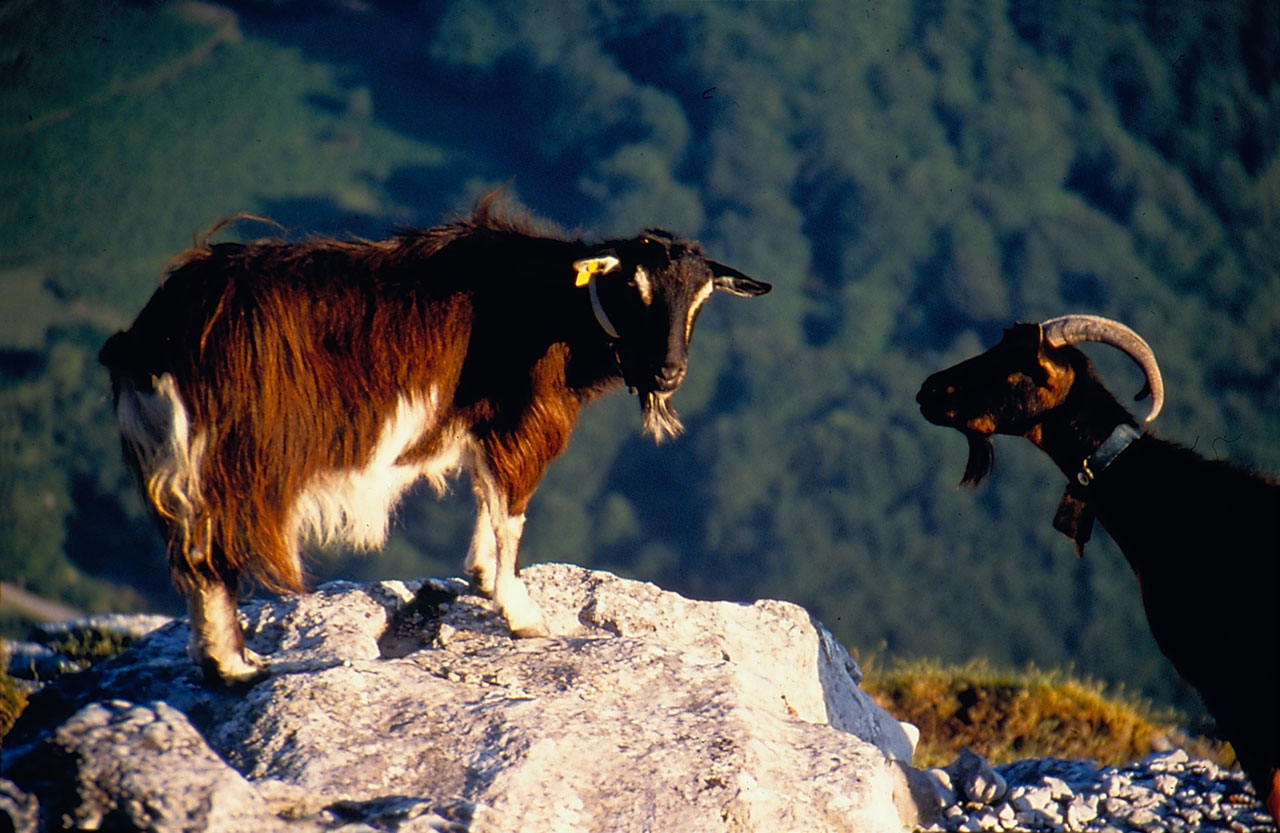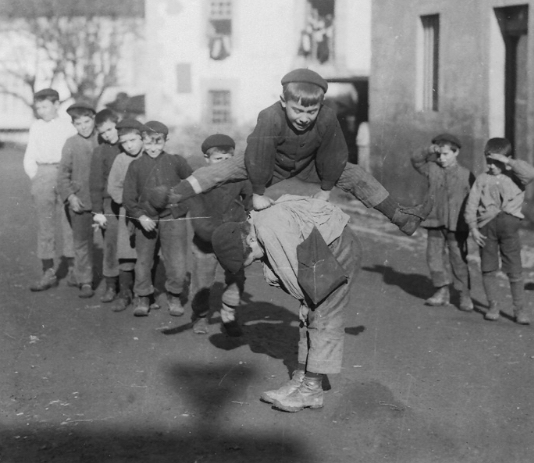Diferencia entre revisiones de «Ganaderia y pastoreo en vasconia/en»
De Atlas Etnográfico de Vasconia
| Línea 11: | Línea 11: | ||
====[/atlas/ganaderia/Ovejas-latxas-de-cara-negra-Abadino.jpg|Dark-faced ''latxa'' sheep. Abadiño (B). Source: Rosa M.ª Ardanza, Etniker Euskalerria Groups.|The permanence of shepherding in the mountains of the Basque Country over centuries may help understand the fact that denominations given to diverse species of livestock, as well as to the implements used, form a distinguishing lexical corpus, independent from Indoeuropean languages.|]==== | ====[/atlas/ganaderia/Ovejas-latxas-de-cara-negra-Abadino.jpg|Dark-faced ''latxa'' sheep. Abadiño (B). Source: Rosa M.ª Ardanza, Etniker Euskalerria Groups.|The permanence of shepherding in the mountains of the Basque Country over centuries may help understand the fact that denominations given to diverse species of livestock, as well as to the implements used, form a distinguishing lexical corpus, independent from Indoeuropean languages.|]==== | ||
====[/atlas/ganaderia/Pastando-en-Eneabe-Zeanuri-1996.jpg|Grazing in Eneabe. Zeanuri (B), 1996. Source: Labayru Fundazioa Photograhic Archive: José Ignacio García Muñoz.|Two millennia ago Pliny distinguished Vasconum saltus, humid and wooded, from Vasconum ager, with its grain fields and vineyards. That distinction still remains today, with regard to livestock farming.|]==== | ====[/atlas/ganaderia/Pastando-en-Eneabe-Zeanuri-1996.jpg|Grazing in Eneabe. Zeanuri (B), 1996. Source: Labayru Fundazioa Photograhic Archive: José Ignacio García Muñoz.|Two millennia ago Pliny distinguished Vasconum saltus, humid and wooded, from Vasconum ager, with its grain fields and vineyards. That distinction still remains today, with regard to livestock farming.|]==== | ||
| − | |||
| Línea 37: | Línea 36: | ||
====[/atlas/ganaderia/Pastor-y-espaldero-Canada-de-los-Roncaleses-1996.jpg|Herder and dog. Droveway of the Roncalese (N), 1996. Source: Iñaki San Miguel, Etniker Euskalerria Groups.|The introduction of sheepdogs meant they replaced the zagales, young children who had been in charge of herding the flock up to then.||]==== | ====[/atlas/ganaderia/Pastor-y-espaldero-Canada-de-los-Roncaleses-1996.jpg|Herder and dog. Droveway of the Roncalese (N), 1996. Source: Iñaki San Miguel, Etniker Euskalerria Groups.|The introduction of sheepdogs meant they replaced the zagales, young children who had been in charge of herding the flock up to then.||]==== | ||
| + | |||
| + | |||
| + | ==[related]== | ||
| + | ===Outstanding contents=== | ||
| + | ====[/irontec/categorias/libro-ganaderia.png|Farming and Shepherding in the Basque Country|Feeding of stabled livestock|[[ALIMENTACION_DEL_GANADO_ESTABULADO/en]]]==== | ||
| + | ====[/irontec/categorias/libro-ganaderia.png|Farming and Shepherding in the Basque Country|Common pasture land|[[PASTOS_COMUNALES/en]]]==== | ||
| + | ====[/irontec/categorias/libro-ganaderia.png|Farming and Shepherding in the Basque Country|Cheese making|[[LA_FABRICACION_DEL_QUESO._GAZTAGINTZA/en]]]==== | ||
| + | ====[/irontec/categorias/libro-ganaderia.png|Farming and Shepherding in the Basque Country|Bees|[[LAS_ABEJAS._ERLEA/en]]]==== | ||
{{DISPLAYTITLE: Livestock Farming and Shepherding in the Basque Country}} {{#bookTitle:Livestock Farming and Shepherding in the Basque Country | Ganaderia_y_pastoreo_en_vasconia/en}} | {{DISPLAYTITLE: Livestock Farming and Shepherding in the Basque Country}} {{#bookTitle:Livestock Farming and Shepherding in the Basque Country | Ganaderia_y_pastoreo_en_vasconia/en}} | ||
Revisión del 13:39 17 feb 2020

Livestock Farming and Shepherding in the Basque Country
Animal husbandry as a way of life rather than an economic opportunity: aspects related to domestic animals and the human-animal bond.
Black sheep in the flock. Meaga, Getaria (G). Source: Antxon Aguirre, Etniker Euskalerria Groups.




